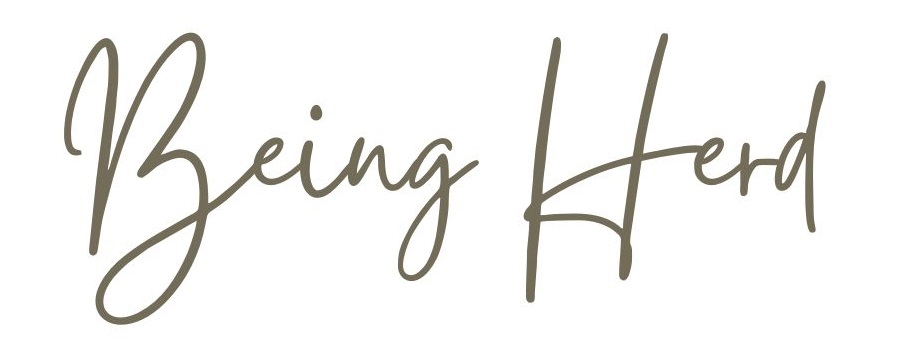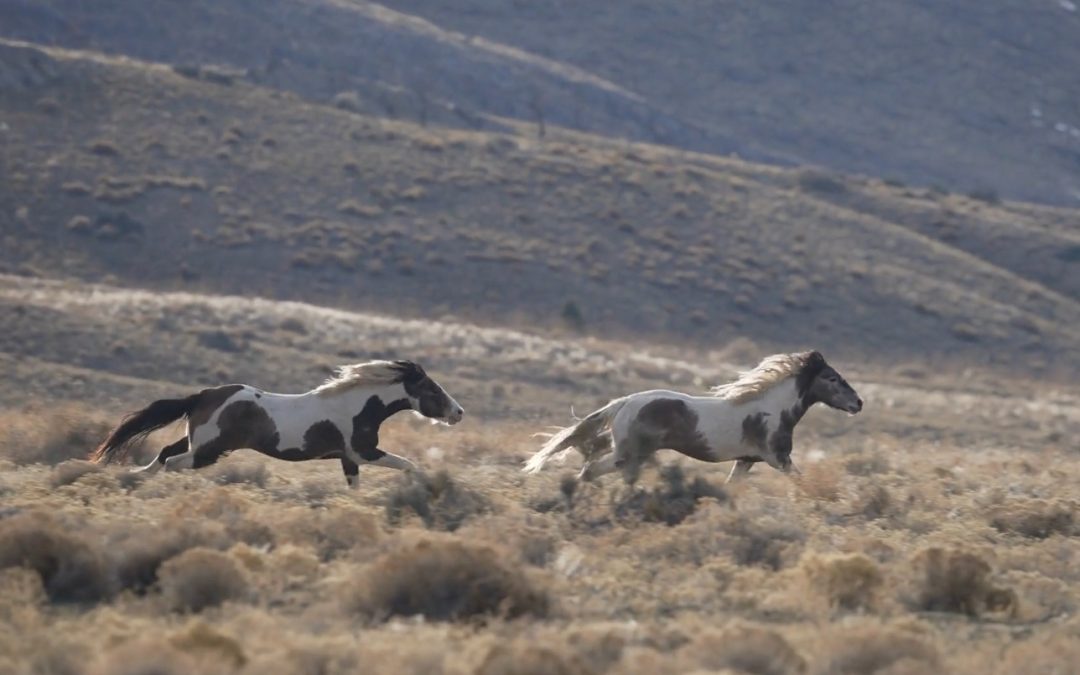Many people who practice natural horsemanship believe that working a horse in a round pen, particularly using the ‘join-up’ method, establishes trust and leadership. But is that really true? Let me take you into the world of wild horses and see, if we can find a similar situation within the herd – and if so, what that means…
- The Idea Behind Join-Up
The idea of a join-up is that by driving the horse forward – making them move their feet – and then releasing the pressure when they turn towards the human, the horse will recognize the person as a leader.

The moment when the horse stops running, turns and then follows feels deeply rewarding—it appears as though a true bond is forming. As if the horse says: I accept you as my leader. And I understand the feeling, because many years ago, I also did join-ups (it’s not me in the picture though 😉), and it feels good when the horse “chooses” to come to you.
But if we look at this from different perspectives, we might realize that what we’re actually saying to the horse is something entirely different. So, let’s take a closer look:
2. How Horses Experience Being Chased in the Wild
In the natural world, a horse is only chased in a few very specific situations:
1️⃣ Predator Attack – A horse flees for survival when pursued by a predator. This is an extreme stress situation that triggers a strong flight response.
2️⃣ Herd Exclusion – A horse may be driven out of its herd by the stallion. This happens when a horse no longer fits within the herd structure, and the exclusion is clear-cut—the horse is meant to leave, and once it’s far enough away, the chase stops.
3️⃣ Stallion Rivalry – Outside the herd, a stallion may chase another stallion away if he tries to win over a mare. These confrontations involve strong displays of dominant behaviour, but the chased stallion has an escape route.
4️⃣ Chasing After a Fight – Rank disputes may involve brief moments of one horse driving another away, but these are quick and resolved usually within seconds or minutes. They are not prolonged chases like we see in a round pen.
So, in most natural scenarios where a horse is chased, it is a high-stress situation. And in none of them the other horse is trying to establish itself as a trustworthy leader. They’re about survival, status, or exclusion—nothing to do with bonding or voluntary connection. More importantly: in the wild, the chased horse always has the option to escape. In the round pen – it has not.
3. The Toy Car Experiment – What Science Says
A fascinating study by Australian equitation scientists revealed that horses would “join up” even when chased by a remote-controlled toy car. The study replicated round pen training using a small electric car instead of a human trainer. The results? Horses responded in the same way—they ran, stopped, turned toward the object, and eventually followed it.

What does this tell us? It suggests that “join-up” isn’t about recognizing leadership or bonding with a human—it’s a simple response to pressure and release. The moment pressure stops, the horse moves toward the thing that provided relief, whether it’s a human, a toy car, or anything else. The researchers even observed some horses kicking or stomping on the car. The stress was real, and the response was driven by relief-seeking, not trust-building.
So, this research challenges the fundamental claim that join-up mimics horse behavior. Instead, it shows that the horse is not choosing to follow out of trust but simply reacting to an aversive situation.
4. A Wild Horse Perspective: What Message Are We Sending?
Now, let’s dive even deeper into this and take a look at the ‘join-up’ from a wild horse perspective. If we truly want to build a relationship with our horses that resembles natural herd dynamics, then we need to ask:
👉 What message do we send to our horse when we do a Join-Up?
From a wild horse’s perspective, being driven forward with force and a lot of energy only happens in one scenario within a herd: exclusion.
Is that really the message we want to send – that we want to exclude our horse from the herd?
For a horse, exclusion from the herd is an extreme situation. A horse that has been excluded is often confused about what happened and will often try for days or even weeks to reconnect, following the herd at a distance. If we mirror this process in the round pen, we may unintentionally trigger this deeply ingrained survival response. The horse isn’t saying, I respect you as my leader. It’s saying, Please don’t exclude me. And that’s a very different dynamic.
A better approach is to observe how horses invite each other in, rather than to exclude, to build a connection that isn’t based on fear, but on mutual trust.
If you want to dive deeper into this and explore what’s really happening in a round-pen, check out my latest YouTube video. We’ll talk about why horses “join up” and how these techniques may actually desensitize them to the subtle language of wild horses.
5. What Does This Mean for Us?
If join-up works by exploiting survival instincts rather than establishing true leadership, then what should we do instead?
✔ Shift the Focus to Genuine Communication – Instead of relying on high-stress scenarios, we can build trust through consistency, clarity, and understanding natural horse signals.
✔ Respect the Horse’s Need for Safety – A real herd leader doesn’t create unnecessary fear; they provide confidence and security.
✔ Recognize Subtle Horse Language – If we repeatedly expose our horses to extreme pressure and then sudden relief, they may become desensitized to the very communication signals we want them to respond to.
Because real connection doesn’t come from making a horse run—it comes from giving them a reason to stay.
If you’d like to learn more, download my free guide here or sign up for my intro video series. I’d also love to hear from you—feel free to leave a comment or, my favorite option 😉, join the conversation in the Being Herd Membership Program!


Recent Comments